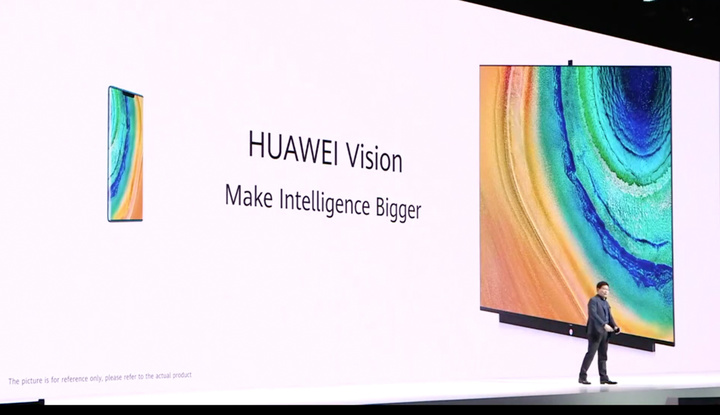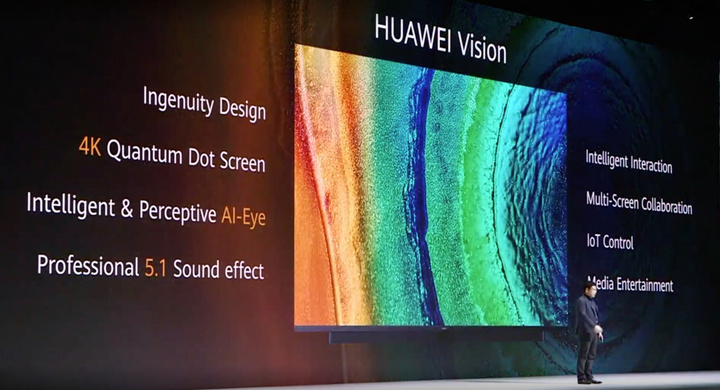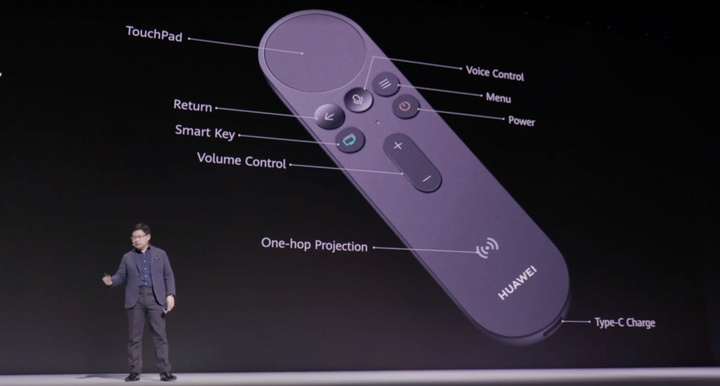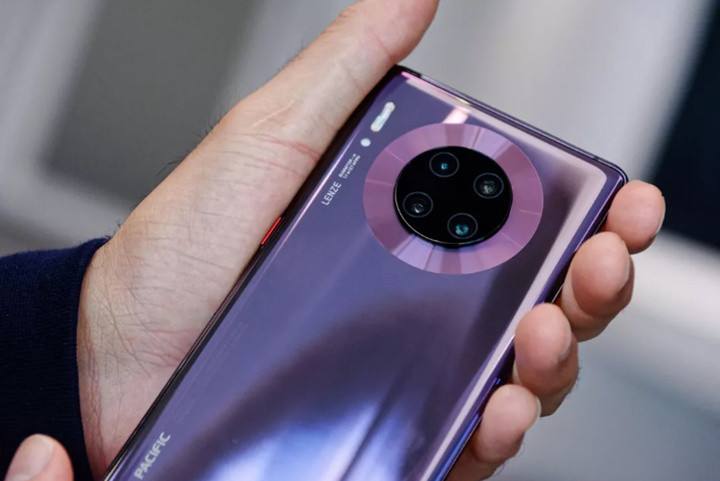Huawei is a company that will do everything that it is good at, and has no reservations, so before this conference, We can already predict where the key part of Huawei will be:
1. How does Huawei show its advantages on 5G2. Huawei can advance the hardware capabilities of mobile phone photos to a certain point.
Showing these two abilities sounds simple and difficult to do, and everyone is starting to reduce the hardware technology and gradually turn to software. At the time of capacity or ecological services, Huawei’s conference appeared to be a particularly hard core.
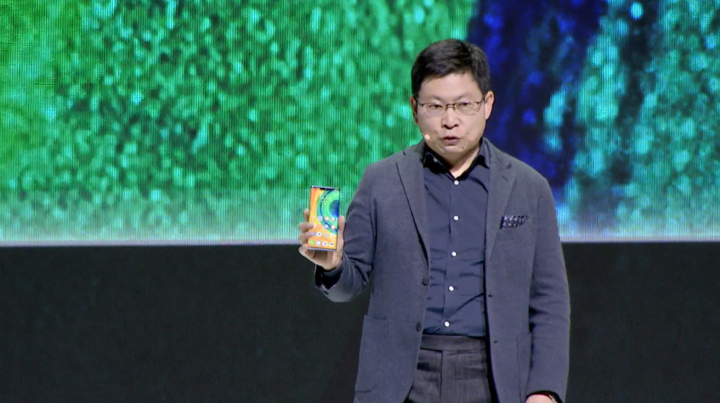
BeijingOn the evening of September 19th, Huawei held a new product launch conference in Munich, Germany, and officially released the flagship mobile phone Mate30 series.
The four Mate 30 releases, changing more than just design
This year Huawei divided the Mate 30 series into four models, one is the regular configuration Mate 30; the other is the representative series benchmark Mate 30 Pro and Mate 30 Pro 5G;
There is also a Mate 30 RS Porsche design with the highest configuration and the most expensive price. This is Huawei and Porsche. Designed to create the third Mate series phone, as in the past, it is customized based on the Pro product line.
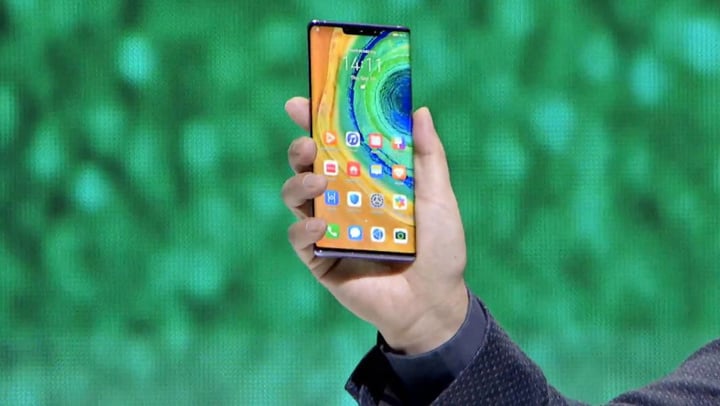
▲ Huawei Mate 30 Pro. Image from: CNET
First look at the screen data. In addition to the size, the screen specifications of the two phones are still slightly different:
- Mate 30: 6.62″ straight screen with 2340 x 1080 resolution
- Mate 30 Pro / 5G / RS: 6.53″ ring screen with 2400 x 1176
resolution
Unlike the drop screen used by Mate 20 last year, this year Mate 30 has a wider profiled design, at first glance There is something like the previous P20.

As for the higher-end Mate 30 Pro, the ring screen with no earpiece design and hypersurface is used, and the screen is curved. The angle reached 88 degrees near vertical. Previously we called this design “Waterfall Screen”, but this time Huawei gave this screen a new name.
According to Huawei, the meaning of the ring curtain is “the world of the ring”. The picture does not have a border, just like the water spreads out. The mood of the screen. Under the blessing of this ring screen, the width of both sides of the screen is almost zero.
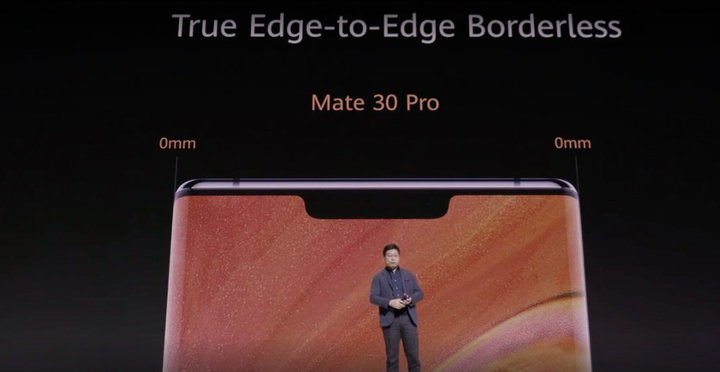
In addition to achieving a higher screen share, Huawei has added side-screen touch to this ring screen.
It’s a bit of a point, when you tap the phone to play the game, the side screen facing up is acting as the handle. L” and “R” are equivalent to adding more than two function keys that can be operated by the index finger.
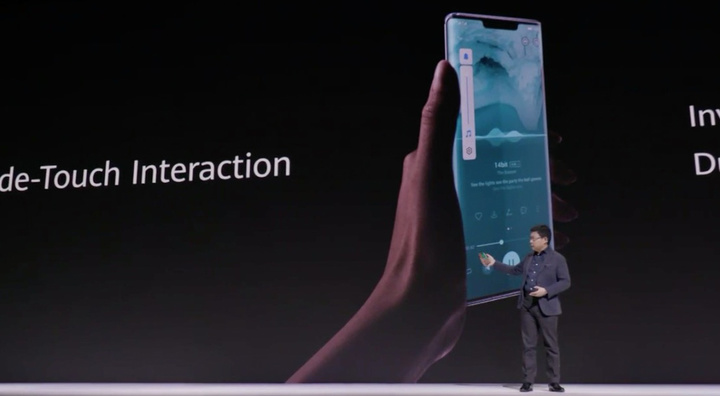
For example, when playing a shooting game, we can only use the thumb to control the movement and shooting, but now through the side screen The index finger can be used to share the action instructions of the shooting, and the operation is more flexible.
Of course, in addition to controlling the game, the side screen can also provide other adjustment operations. For example, double-click the side screen to adjust the volume; the self-timer can make the side screen function as the shutter function key.
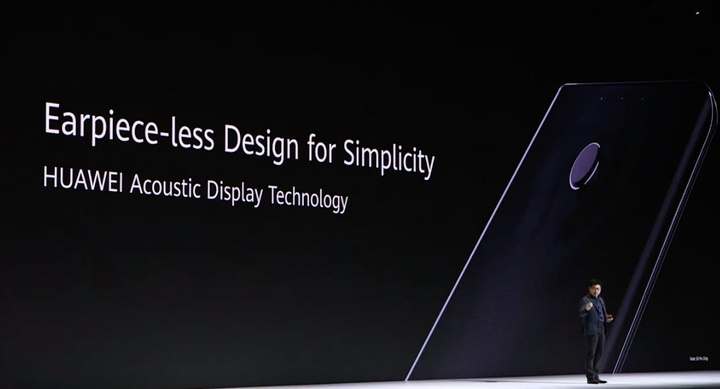
Two phones can support screen fingerprinting, but Mate 30 Pro also supports 3D facial recognition, in this screen bangs Includes 3D depth detection, ambient light, distance sensor, and front-end self-timer camera. So you can also see that the Mate 30 Pro’s bangs are significantly longer than the Mate 30 because it has more sensors than the former.
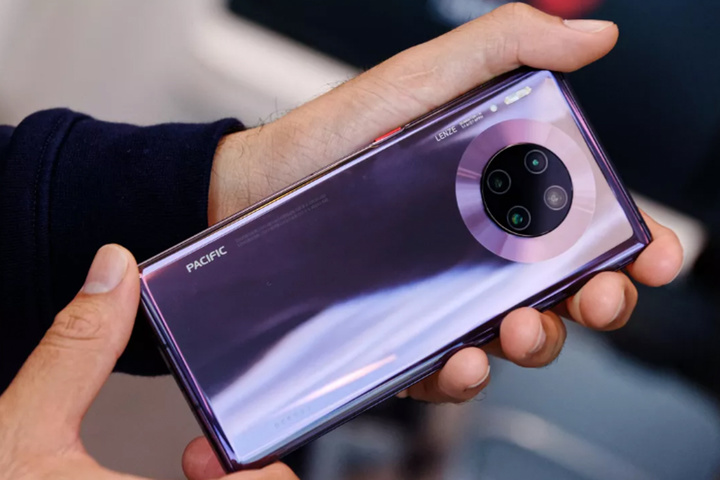
▲ Image from: CNET
The biggest change in the Mate 30 series this year is the design of the back and the camera. Today, with more and more mobile phone cameras, How to make the camera look good under the hard indicators of ensuring the quality of the hardware is indeed a headache for the manufacturers.
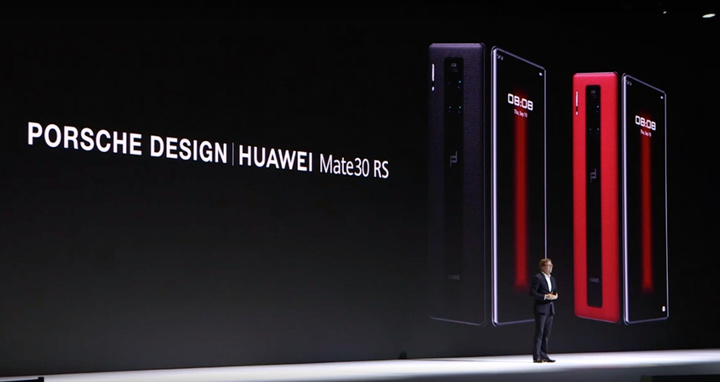
Compared with the four-eye headlight design of last year’s Mate 20 series, this year’s Mate 30 and Mate 30 Pro unified the halo design lens. But because the Mate 30 RS backshell is made of glass and leather, this is the only model in the series that uses a four-eye design.
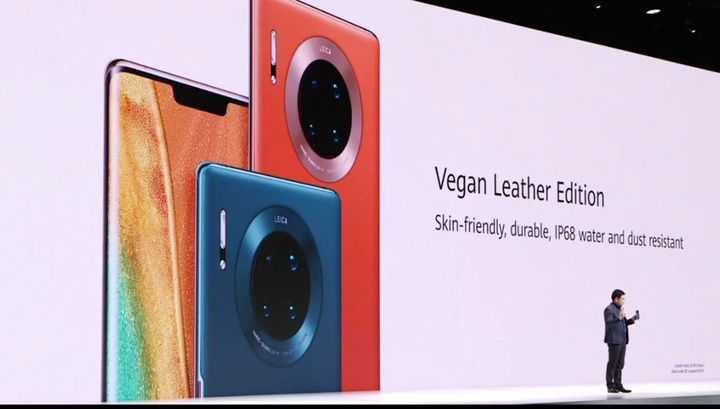
The color matching, Mate 30 and Mate 30 Pro provide four colors of Xinghe Silver, 翡冷翠, Roland Purple, and Bright Black. Interestingly, this time Mate 30 series Not only the 3D curved glass, but also the “sand (bottom) + polishing (top)” process is used.
In addition, this time, a special edition of vegan leather is added, which is the new two of Mori Green and Danxia Orange. Color matching.

Weight, Mate 30 and Mate 30 Pro reached 196 grams and 198 grams, respectively, which is heavier than last year’s Mate 20 About 10 grams.
The body of the other two phones also supports dust and water resistance, but the degree of protection is also a bit different: Mate 30 is IP53; Mate 30 Pro is IP68. /span>
Double 40 million four-shot lens, the movie lens is amazing
After the P20 Pro violently stacks CMOS specifications and wins the camera title, the camera game in the mobile world has changed. Huawei is the representative of hardware specifications, while Google is extremely dependent on software algorithms.
As the algorithm matures and the CMOS specifications are improved again, the successor Mate 20 Pro and P30 Pro further stabilize Huawei’s flagship mobile phone. Photographing the status of the benchmark. Today, people’s expectation for the Mate 30 series camera system is to see how Huawei can raise its upper limit again.

“Last year, this year round”, this is the most intuitive experience brought by the Mate 30 series camera module, in Apple When Google finally used “Yuba Design”, Huawei once again changed the design incarnation “Oreo”, which is officially called Halo Design aura design, and the lens module was inspired by the Leica camera lens.
This time the Mate 30 and Mate 30 Pro models still have some differences in the lens module.
Mate 30 features a three-camera design, including 16 million super wide-angle lenses, f/2.2; the main camera is a 40-megapixel wide-angle lens. f/1.8 aperture; the last is an 8 megapixel telephoto lens that achieves 3x optical zoom and 30x digital zoom, 45x hybrid zoom, f/2.4 aperture, and OIS anti-shake.

The two sub-photographs are the same on the same pixel as last year, but the main photo jumped from 12 million in Mate 20 to 40 million. It adopts the 1/1.7-inch P30 Pro and RYYB CMOS. We can guess that the improvement on this main-camera wide-angle lens will be quite obvious. For the Mate series, taking pictures without a short board is the most important.
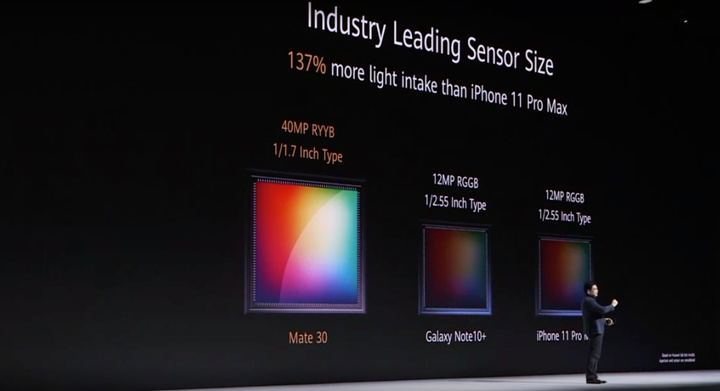
As for the flagship product Mate 30 Pro at the top, it has adopted a further “super-sensing Leica four-shot” design, which used dual 40 million lenses for the first time. The previous super wide-angle lens was replaced by a 40 megapixel movie lens. The main camera is still 40 megapixel RYYB CMOS (equivalent to 27mm), 1/ 1.7 inches, f/1.6 aperture;The other telephoto end (equivalent to 80m) is still 8 million pixels. It also has a 45x hybrid zoom and an additional ToF lens compared to the Mate 30. Both main and telephoto support OIS anti-shake.
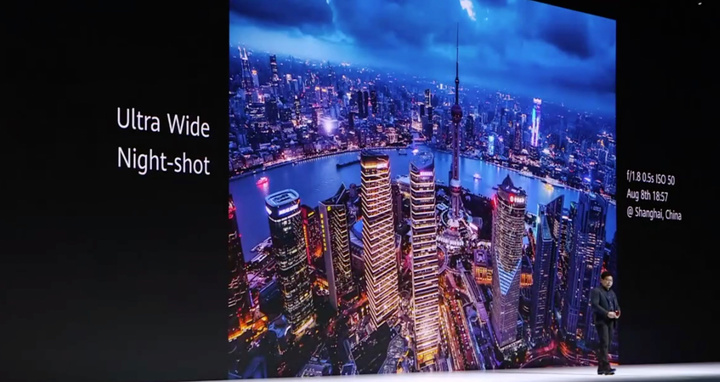
This is on Mate 30 ProThe specifications of the “movie lens” are quite exaggerated, 1/1.54 of the ratio of 3:2 EnglishInch outsole (equivalent to 18mm), RGGB arrangement, supports 2.5cm macro shooting, With super wide-angle shooting capability, f/1.8 aperture, can achieve Real-time depth of field blur, as well as 4K HDR+ video, video ISO up to 51200.
The other feature of the chin is the slow motion, this time the Mate 30 Pro supports a super slow 7680fps ActionsFeatures can slow down the world you see by 256 times. Under the super slow motion, the hummingbird wings that are waved more than 80 times per second are clearly visible. Perhaps the world in the fast silver eye is like this.
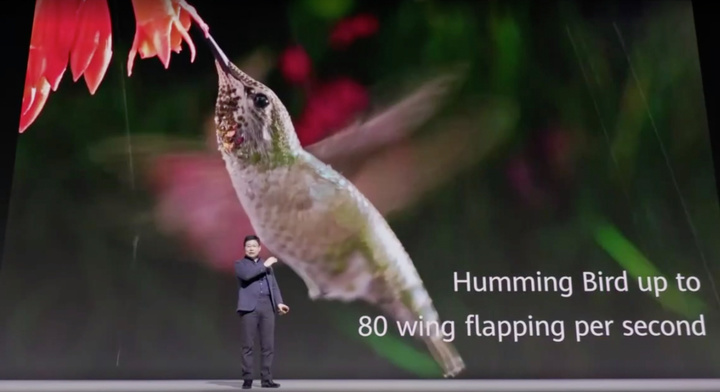
But the question is how much of this 7680fps is implemented by interpolation, and the effect is yet to be further examined later.
In the 4K dark-light time-lapse photography, Huawei once again showed “traditional art”, and Samsung Note10+ was slammed again. .
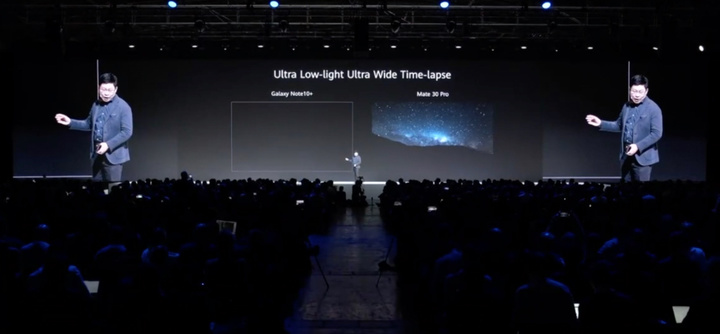
In addition to the 32-megapixel front lens and 3D deep-sensing camera, this Mate 30 Pro is in portrait self-portrait There are alsoWill be better performance.
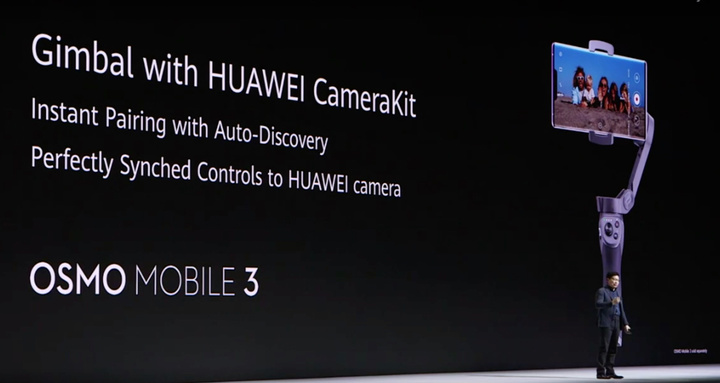
This time Huawei also brought camera accessories, such as the PTZ pairing and control solution with OSMO Mobile built in, and Profoto Light control.
In general, Huawei still did not play some bells and whistles this time, but once again pulled the specifications higher.
The first Kirin 990 processor with a speed of 25 times that of 4G
In order toSupporting such a complex camera function, this year Huawei launched the Mate 30 series just at IFA releaseThe short Kirin 990 5G processor.
As a new product that Huawei introduced in 10 minutes at the press conference, Kirin 990 5G set a number of “industry first” this year. “:”
- Industry’s first 7nm EUV 5G SoC
- The industry’s first flagship SoC with integrated 5G baseband
- The industry’s first SoC with 16-core Mali-G76
- The industry’s first SoC with a large core + microkernel architecture NPU

▲ Comparison of parameters between Kirin 990 and Kirin 990 5G version
Specific to the product data, compared with the previous generation, the Kirin 990 5G has improved the performance of CPU, GPU and NPU respectively. % / 39% / 490%, power efficiency increased by 23% / 32% / 290%, here we can understand that “to spend less effort, do more things.”
dui In addition, Yu Chengdong also emphasized that the Kirin 990 5G supports NSA and SA dual networking, and Mate 20 X 5G and The Mate 30 Pro 5G is the fastest 5G phone available today.
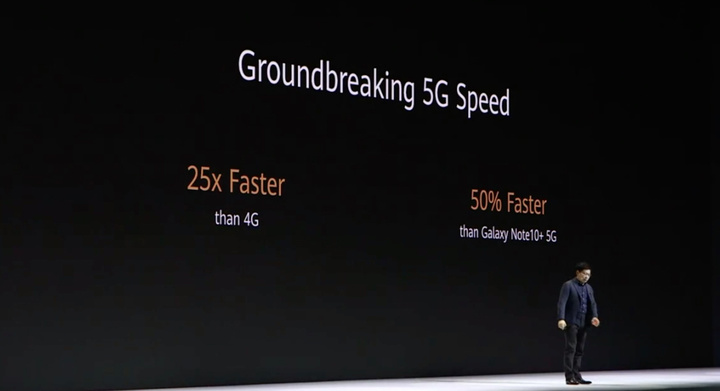
At the press conference, Yu Chengdong exhibited a set of laboratory data compared to friends:
Comparing the current 4G speed, 5G is improved by 25 times; compared to Galaxy Note 10+ 5G version Mate 30 Pro 5G is 50% faster than the network speed.
In addition to a speed-advanced leader, the Kirin 990 5G is the first to be equipped with the DaVinci architecture NPU. Device. This architecture uses a new design of “big core + micro core”. The operating principle is the same as that of multi-core processors, while providing high-performance computing. Can control:
- The big core is responsible for performance and energy performance, such as using AI real-time computing when shooting;
- Microkernel is responsible for providing low-power computing support for everyday functions such as face recognition, smart assistants, and more.
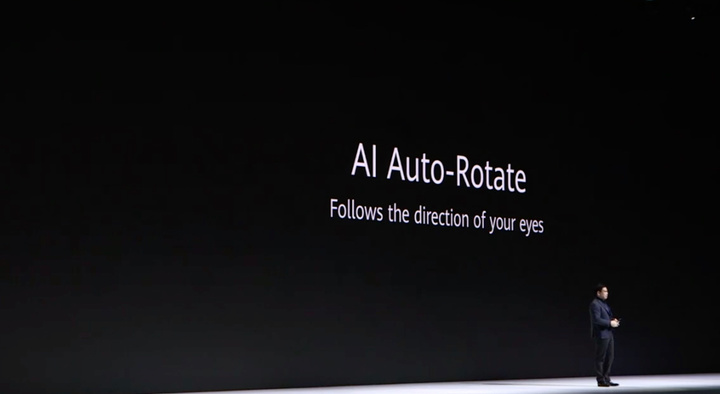
It’s worth mentioning that the Mate 30 series also Built-in secure microkernel and support for multiple security compliance certifications. Most notableToo much “AI information protection” – the phone can intelligently identify the owner, and when multiple people look at the phone screen, the privacy information can be automatically hidden.
For other configurations, the Mate 30 uses an 8 + 128GB storage combination; the Mate 30 Pro and 5G versions are a combination of 8 + 256GB. The highest-configured Mate 30 RS features a 12GB + 512GB storage combination, and all four phones support NM card expansion.

In order to get the 5G mobile phone to dissipate heat under high-voltage transmission for a long time, the Mate 30 series is also equipped with a graphene film. Cooling technology.
The battery and charging section is one of the highlights of this Mate 30 series update. First of all, on the battery data, the Mate 30 is equipped with a 4200mAh battery, and the Mate 30 Pro can accommodate a 4500mAh battery because of its larger body.
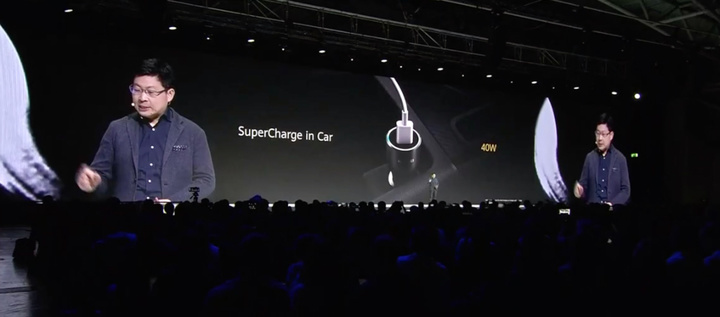
In addition, during the charging process, Mate 30 Pro supports 40W wired fast charge and 27W wireless fast charge. The charging speed to the wireless is also increased by 3 times compared with the previous generation.
In addition, Huawei has also introduced a super charging treasure and car charger, both wired devices can provide mobile phones A fast charge of up to 40W, which in turn enables the “full scene fast charge” experience.
EMUI Refactoring, New Animation and Dark Mode
New machine new system, Huawei’s latest EMUI 10 debuted after the HDC conference, built on Android 10.
In addition to innovations in UI design, new features include dark mode, new non-linear animation, and new screen display and many more.
This dark mode also provides a development engine for third parties because the phone uses an OLED screen in dark mode for further power savings. Developers, third-party apps can quickly complete dark mode design.
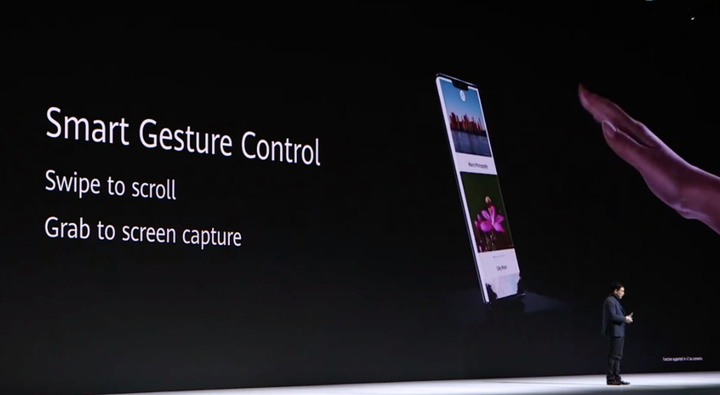
The new air-to-air operation can operate the phone without touching the screen, such as five fingers grabbing and taking pictures, waving up and down Hand scrolling the page, etc., although a bit fancy, but in some scenes will have a miraculous effect.
The application of AI allows the user to no longer tangled the screen direction, it will automatically judge the user’s status through AI, lying When you are in bed, you don’t have to worry about auto-rotation anymore.
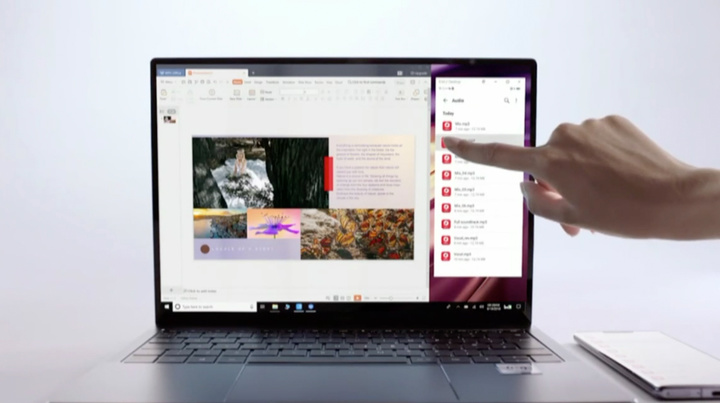
Multi-screen collaboration was introduced at the Developers Conference, a feature that enables mobile phones to be easily shared before the computer. As long as the conventional drag can be very convenient, you can share the picture and file for two-way sharing, and even watch the mobile version of WeChat friends circle on the computer, which is also part of Huawei’s full scene smart life.
Mate30 series also supports Huawei M-Pen stylus, which supports 4096-level pressure, and Samsung next door feels shivering.

Privacy and security aspects Mate 30 Pro supports screen fingerprint technology and structured light face recognition, and various security schemes support Mate 30 Pro achieves the highest level of protection for CC EAL5+.
Basically, this time EMUI 10 is the part that was previously demonstrated at the developer conference, but it’s specific Whether it performs better on the Mate30 series and some special features, you need to know later.

Because this year’s overseas version of the Mate 30 series each modelThere is only one configuration, so price consolidation is also much more convenient:
- Mate 30 (8+128GB): 799 Euro (about 6270 RMB)
- Mate 30 Pro (8+256GB): 1099 Euro (about 8630 RMB)
- Mate 30 Pro 5G (8+256GB): 1199 Euro (about 9410 RMB)
- Mate 30 RS (12+512GB): 2095 Euro (about 16,000 RMB)
At present, Huawei’s domestic official website has announced that it will start pre-sale at 0:00 on September 20.
Huawei Smart Screen and New Watch
In addition to mobile phones, Huawei also updated the HUAWEI Watch GT 2 watch. Available in 46nm and 42nm sizes, the watch features a 3D glass + polished metal frame for maximum screen brightness1000 nits, and support the screen is always on.
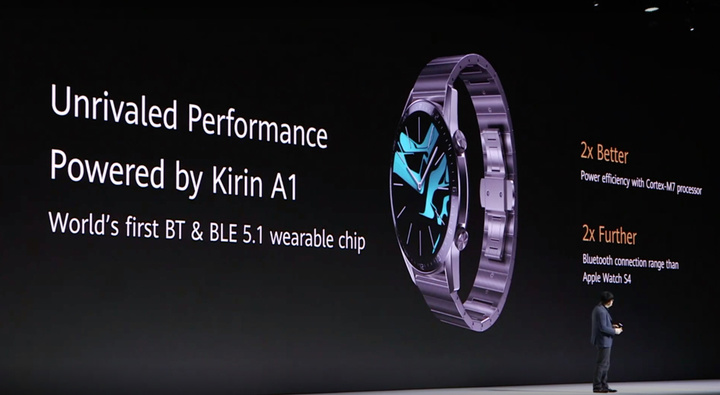
In terms of hardware configuration, HUAWEI Watch GT 2 is equipped with Huawei A1 processor, and its endurance and connection performance are compared with the previous generation. Doubled.
According to Huawei Labs data, the new watch can be charged for up to two weeks of battery life, with built-in compass and heart rate monitoring. . In addition, the watch also provides offline music playback (built-in storage) and wrist-wrist voice calls, but only with Bluetooth wireless headsets.

Of course, in addition to the regular upgrade design and configuration, there are a variety of new straps, including Which styles we can see from the PPT of the conference.
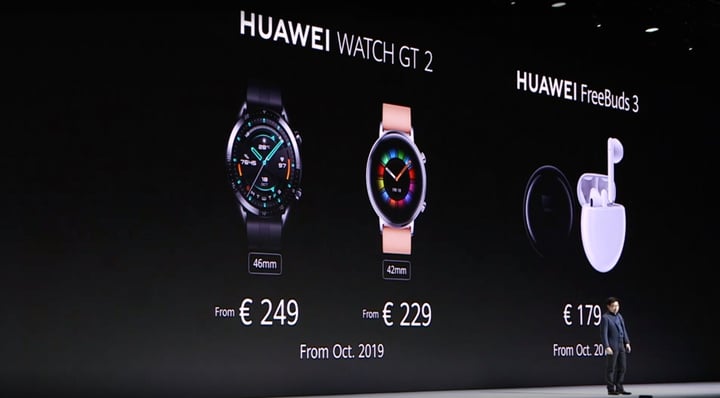
▲HUAWEI Watch 2 Two sizes and FreeBuds Bluetooth headset price
